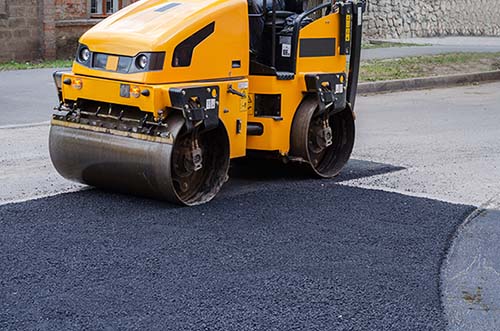
(Updated July 2025)
What to Watch For Before and After Paving
Not all asphalt paving jobs are created equal. A surface might look smooth and new when the crew pulls away, but problems can start showing up within weeks if the job wasn’t done right. Whether you’re planning to hire a contractor or evaluating a recent paving project, knowing the signs of a bad asphalt job can save you time, money, and frustration down the road.
This guide breaks down common red flags, explains why they matter, and helps you make confident decisions before and after your asphalt driveway or parking lot is installed.
What Makes a “Bad” Asphalt Job?
A bad asphalt paving job doesn’t just look rough—it fails to perform under daily wear, water exposure, and temperature changes. Signs of a poor job can include early cracks, puddling, uneven surfaces, or even complete deterioration.
Ultimately, the quality of an asphalt project comes down to three things:
- Proper preparation of the base and sub-base
- Use of the right materials (in the right quantities)
- Skilled workmanship and attention to detail
Let’s take a closer look at how to spot when those elements are missing.
Common Signs of a Bad Asphalt Job
 1. Thin Asphalt Layers
1. Thin Asphalt Layers
A proper asphalt driveway or lot should have at least 2–3 inches of compacted asphalt for residential projects—and more for commercial use. If your contractor only lays one inch, the pavement is at risk of early cracking and structural failure.
- Thin layers may look fine initially but won’t withstand traffic loads
- You can often see this if the edge of the pavement crumbles easily
- Always ask how thick the asphalt layer will be before signing a contract
2. Poor or No Water Drainage
Pooling water is one of the clearest signs of poor grading or improper slope. Even small puddles will eventually seep through the asphalt surface, softening the base and leading to potholes or cracks.
- Proper grading is critical to direct water away from the pavement
- Asphalt should slope at about 2% (2 inches per 10 feet)
- Check for areas that collect water after rainfall—they’re a red flag
3. No Smooth Transition to Other Surfaces
Good paving includes careful transitions where new asphalt meets existing structures like sidewalks, curbs, or roads.
- A smooth transition prevents tripping hazards or jarring bumps
- Sloppy edge work often leads to cracking or erosion at the seams
- If you feel a bump every time you drive onto your new driveway, that’s a problem
4. Inadequate Compaction
Proper compaction ensures the asphalt binds together and to the base layer beneath it. Without it, the surface will be soft, uneven, or begin to crumble.
- Look for tire marks, dips, or footprints—these indicate poor compaction
- A heavy roller should be used to compress every layer (base and asphalt)
- Lack of compaction shortens the life of the pavement significantly
5. Surface Irregularities or Visible Seams
A finished asphalt surface should look consistent and feel smooth underfoot and under your tires. Visible lines, ridges, or roller marks can signal poor installation technique or rushed work.
- Uneven textures can lead to faster wear
- Visible seams between passes may open up over time
- If you can “see the job was rushed,” it probably was
6. No Primer or Tack Coat Between Layers
If asphalt is being laid over an existing surface, a tack coat (thin asphalt emulsion) should be applied to help bond the layers.
- Without this bond, the new surface can peel or delaminate
- This step is especially important in overlays and patch repairs
- Always ask if a tack coat will be used in your project
7. Edges Not Properly Finished
Edges that drop off abruptly or lack structural support tend to break apart quickly. A good crew will bevel the edges and compact them properly.
- Weak edges can crumble or split within weeks
- You shouldn’t see loose gravel or jagged cut lines along the sides
What to Look for in a Quality Asphalt Job
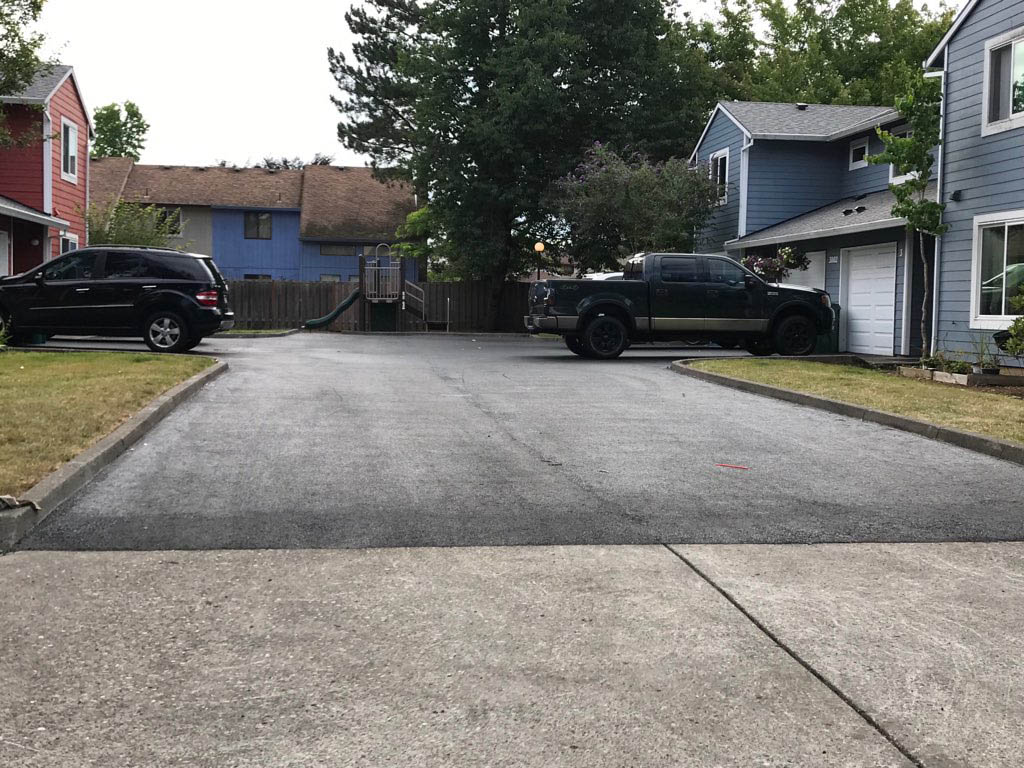 Noticing the bad is important, but knowing what a good asphalt paving job looks like is even better. Here are a few signs your contractor did the job right:
Noticing the bad is important, but knowing what a good asphalt paving job looks like is even better. Here are a few signs your contractor did the job right:
- Asphalt thickness meets project needs
- Smooth, even surface with clean edges
- Proper slope and no standing water after rain
- Seamless transitions to adjoining surfaces
- No visible marks, ridges, or cracks at completion
If possible, ask to see photos or references from previous paving projects before hiring.
Why Some Contractors Cut Corners
In many cases, poor workmanship stems from contractors trying to save time or lower their bid to win a job. That can mean:
- Using less asphalt than required
- Skipping tack coats or edge work
- Rushing compaction or grading
- Relying on undertrained crews
The cheapest quote might save you money today—but cost you far more in repairs tomorrow.
How to Avoid a Bad Asphalt Paving Job
- Ask Questions Up Front: How thick will the asphalt be? What prep work will you do?
- Check Credentials: Make sure they’re licensed, insured, and experienced
- Get a Detailed Estimate: Including base prep, materials, compaction, and cleanup
- Look at Reviews and Past Work: Don’t be afraid to ask for photos or references
- Don’t Pay in Full Up Front: A reputable contractor will offer a fair payment schedule
Signs of a Bad Asphalt Job FAQs
- How can I tell if my new asphalt driveway was done poorly?
Check for puddles, bumps, crumbling edges, or uneven transitions. If the surface feels soft or shows marks, it likely wasn’t compacted correctly. - Is it normal for asphalt to crack shortly after installation?
No. Cracking early on usually means the base wasn’t prepared properly, or the asphalt was too thin. - Should I expect a tack coat when resurfacing an old driveway?
Yes. A tack coat helps bond the new asphalt layer to the old one and is critical for longevity. - What should proper drainage look like in a driveway?
Your asphalt surface should have a gentle slope (about 2%) so that water flows off the pavement instead of pooling. - What happens if asphalt isn’t compacted enough?
Poor compaction can lead to sinking, premature cracking, and water damage. It dramatically shortens the life of the pavement.
Trust Experience When It Comes to Asphalt
A good asphalt paving job is about more than appearances. It’s about lasting quality, proper materials, and skilled craftsmanship at every stage of the project.
At William Stanley & Sons Paving, we bring decades of experience to every driveway and parking lot we install. As a third-generation asphalt contractor, we’re committed to doing the job right the first time—with results that last.
Thinking about a new asphalt surface? Contact us today for a free estimate.

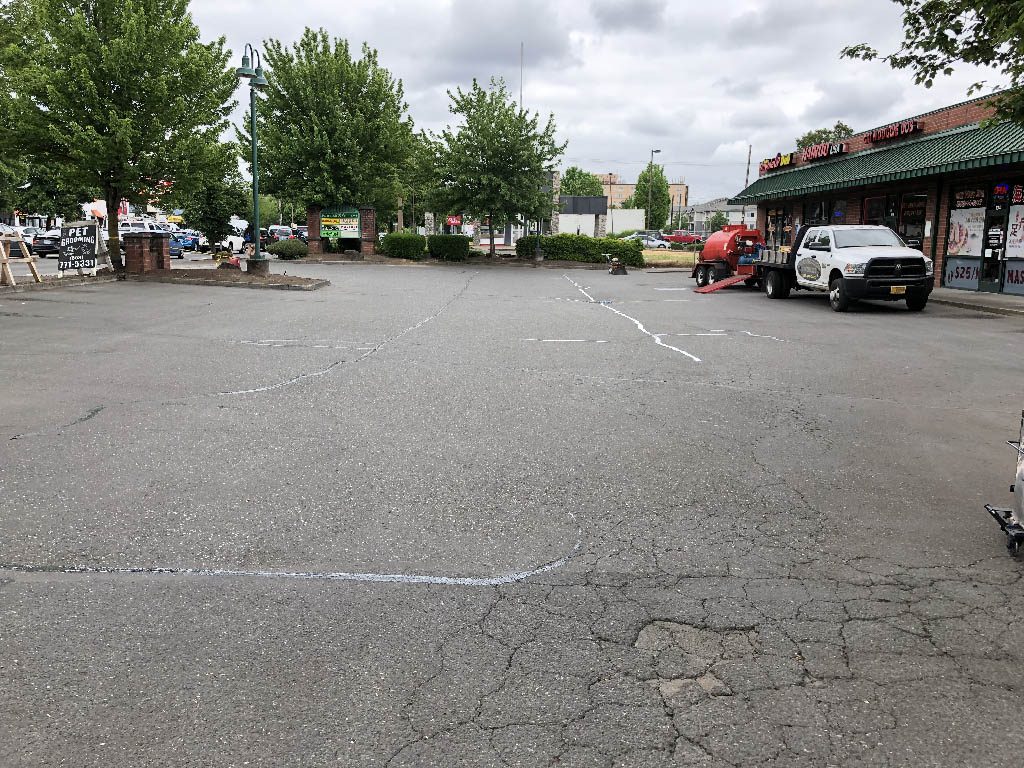 1. Thin Asphalt Layers
1. Thin Asphalt Layers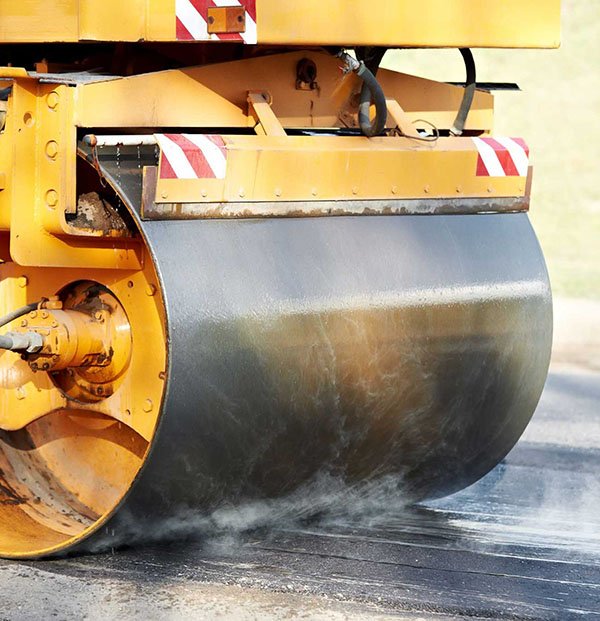
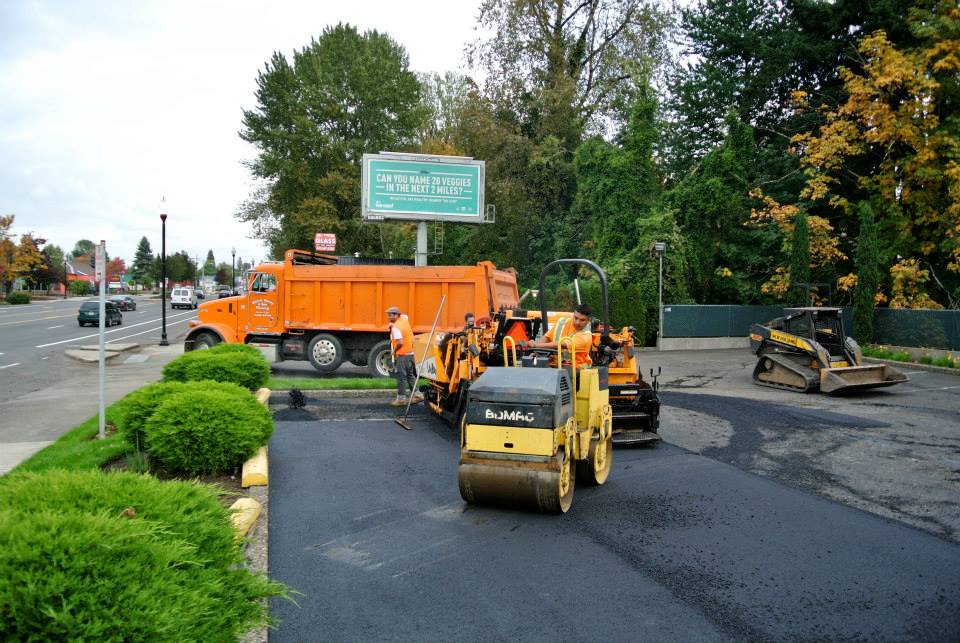 Asphalt paving is the process of installing a durable, weather-resistant road, driveways, paths, and so on using a mixture of asphalt binder, small aggregate (like crushed stone), and sand. The goal is to create a pavement surface that can withstand daily use, water exposure, and traffic loads for years.
Asphalt paving is the process of installing a durable, weather-resistant road, driveways, paths, and so on using a mixture of asphalt binder, small aggregate (like crushed stone), and sand. The goal is to create a pavement surface that can withstand daily use, water exposure, and traffic loads for years.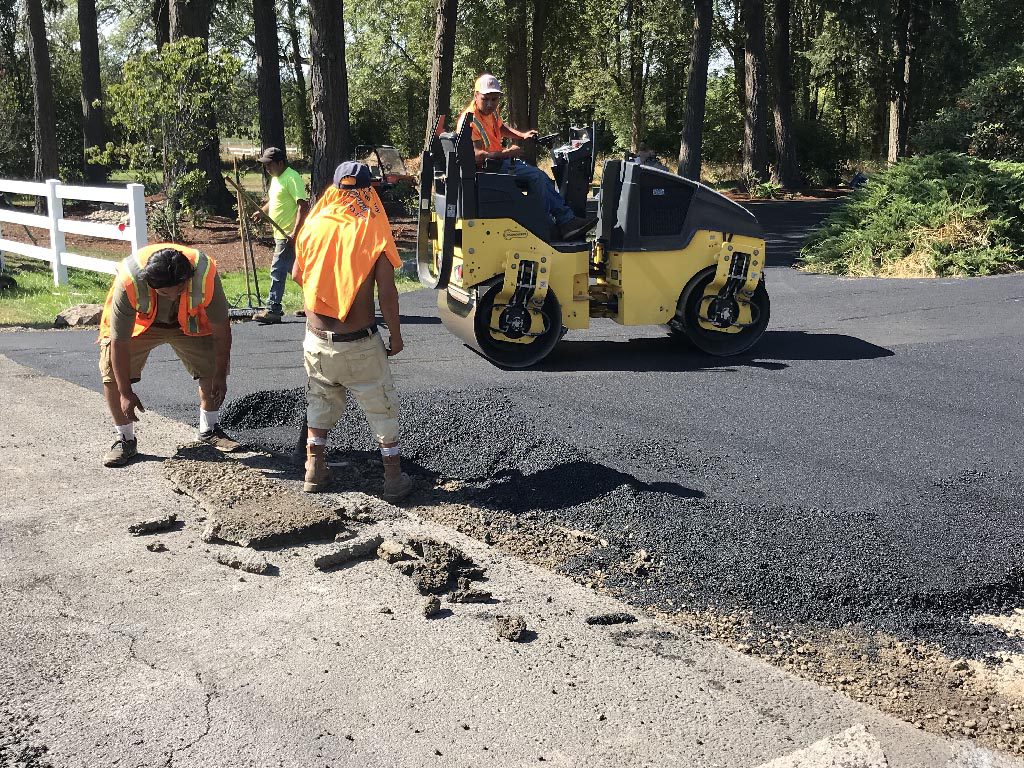 Now comes the visible part: the top asphalt layer. This mix of hot asphalt, sand, and small aggregate is usually produced at an asphalt plant and delivered at about 300°F.
Now comes the visible part: the top asphalt layer. This mix of hot asphalt, sand, and small aggregate is usually produced at an asphalt plant and delivered at about 300°F.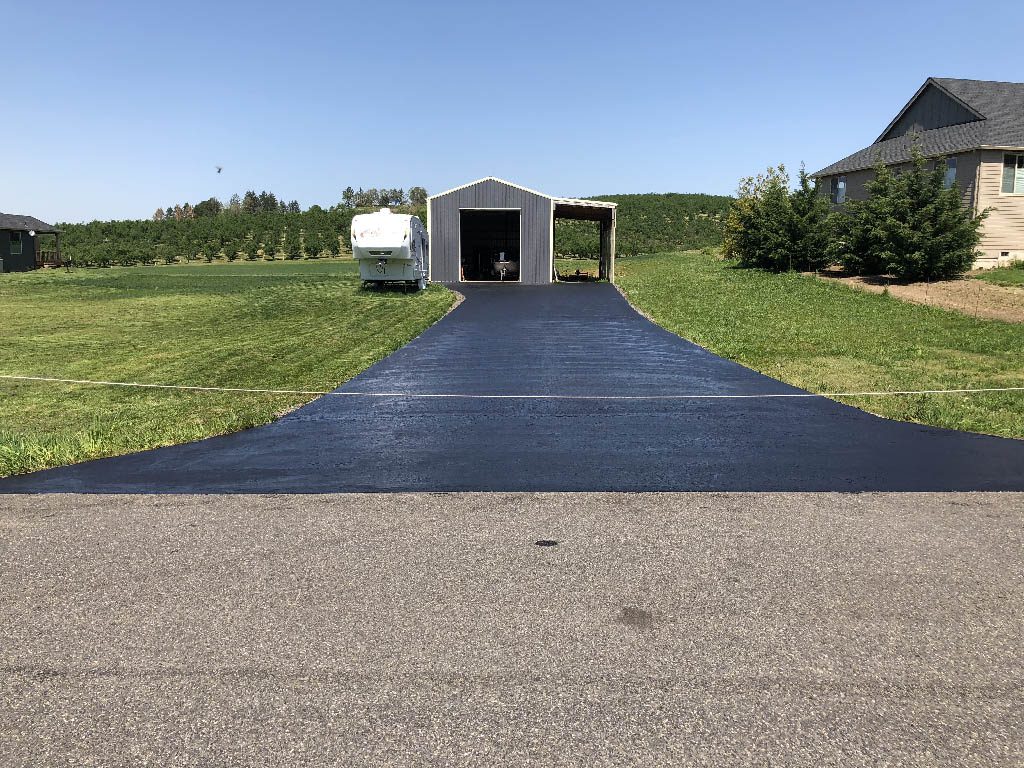 How Long Does the Asphalt Paving Process Take?
How Long Does the Asphalt Paving Process Take?